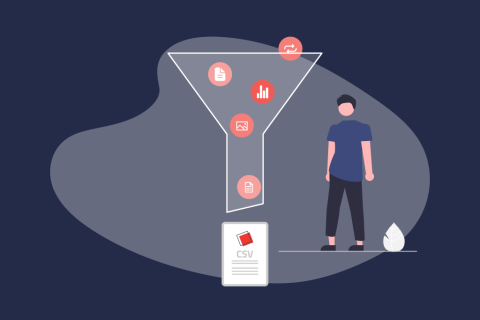Product Communications
Product data first!

Content
How a Strong Foundation Comes with More Success in E-Commerce
Nowadays, an online shop without relevant, pre-processed product data is hardly imaginable — even though it is, to most, still harsh reality. Often times, neither knowhow nor technical equipment is sufficient enough to allow for the enrichment of content. For an optimal provision of product data, both shop operator and product manufacturer share equal responsibility. Indeed, they may follow the same goal, namely, to provide the customer with comprehensive product data for her purchasing decision. Yet, they are confronted with different challenges: Shop operators require high quality and structure when it comes to the processing of supplied product data; for product manufacturers, what counts the most is the speed at which they distribute product data to retailers.
In the article at hand, we discuss the measures to be taken by shop operator and manufacturer in order to provide product data in a quick and high-quality manner.
Good On-Boarding Makes the Difference
Shop operators are burdened with the task to collect data from a broad spectrum, supplied by a great variety of manufacturers. More often than not, the data on one and the same article comes from multiple sources. This is why a methodological approach to On-Boarding for ordering the as of yet unstructured product data enjoys highest priority. Nowadays, all related rules and procedures are fully automated since a manual On-Boarding of data — given the numerous sources and sheer quantity of product data — has been deemed impossible for quite some time. This is where a professional PIM system occupies a strategic position.
Solely importing the data, however, is insufficient: So-called Quality Gates are what sort out data records of products and articles if specifications are not provided or cannot be processed. The On-Boarding may do the pre-processing of data, however the content is yet to be evaluated and further processed. Only then can meaningful content be distributed to relevant publication channels and be of extra value to the customer. For example, all data requires the base-level categorization of whether it is a longtail, standard, or premium product. Such a differentiation is already sufficient enough for controlling the analysis of supplied content.
If data is supplied in different languages, it is to be partially renewed or supplemented in order to process it in a unifying manner. This requires an automated translation management which must, in particular, translate longtail products in a quick and effective manner. The complementary counterpart to this is a manual process for translating standard and premium articles since the related information is more extensive and of greater relevance to the customer.
The shop operator is to aim for a measure of providing as much quantity as possible while enriching the quality as necessary in order to be well prepared for the users’ price comparisons. Only then can data be exported to the shop.
Longtail
In contrast to standard or premium goods, longtail encompasses products which are distributed outside of the main assortment. Usually, this includes remainders or retours so that it comes down to clearance sales. Market’s the name, speed’s its game — which is why they are usually sold online. Prices for longtail are low, the processes are short, and product data scarce.
Manufacturers Are Often Stuck in Silo Mentality
A great challenge to manufacturers is the collaboration between product development and marketing — more often than not, the process is a tedious one, if not non-existent. Often times, the marketing department is first granted access to product information once the article is fully completed and ready for sale. And, usually, this is much too late: At this point in time, the planning of the campaign should already be market-ripe, while the retailers should already be provided with complete information.
When it comes to products and articles in development, the PIM system comes into play. Well ahead of time, the data of the product development team and their systems is submitted and managed in the PIM system so that the marketing can commence at an early stage. All changes are updated automatically parallel to the content being built.
Strategic, Channel-Independent Distribution of Product Data
As a rule, product manufacturers should initially manage their content independently of recipient and distribution channel. This is because the shop is only one of many consumers — which should all receive data which is already processed, enriched, and edited in an optimal manner. All that is required at the end of the process is that the information from the PIM system is exported to the shop and, parallelly, to all other channels such as website, app, B2B customer portal, or B2C price comparison portals. Whether or not all retailers have access to all data revolving around a product is a strategic decision. Product manufacturers are to evaluate whether the department store with a rather general product portfolio is to receive the same information with the same qualitative depth as the specialist retailer.
Why ERP Cannot Do Content
A shop has two data sources: On the one hand, availability and price data; on the other, content and media. Some companies leech their data from their ERP system, even though it is, in fact, not intended for this purpose. When doing so, you lack logical content processes, Quality Gates, and data categorization. Because of this, many changes are to be made manually in the post-editing process.
Ideally, ERP has primacy over availability and price, including logistics and related topics. Content data and media assets, however, are best managed and distributed by a PIM system. At the end, the shop imports data from the combined sources of both channels.
The correct pre-processing and management of your content is the key to your sales success. With a PIM, you render data chaos into well-structured and optimally prepared data, ready to be distributed to all relevant sales channels on demand.
From Our Blog
You may also be interested in the following articles








